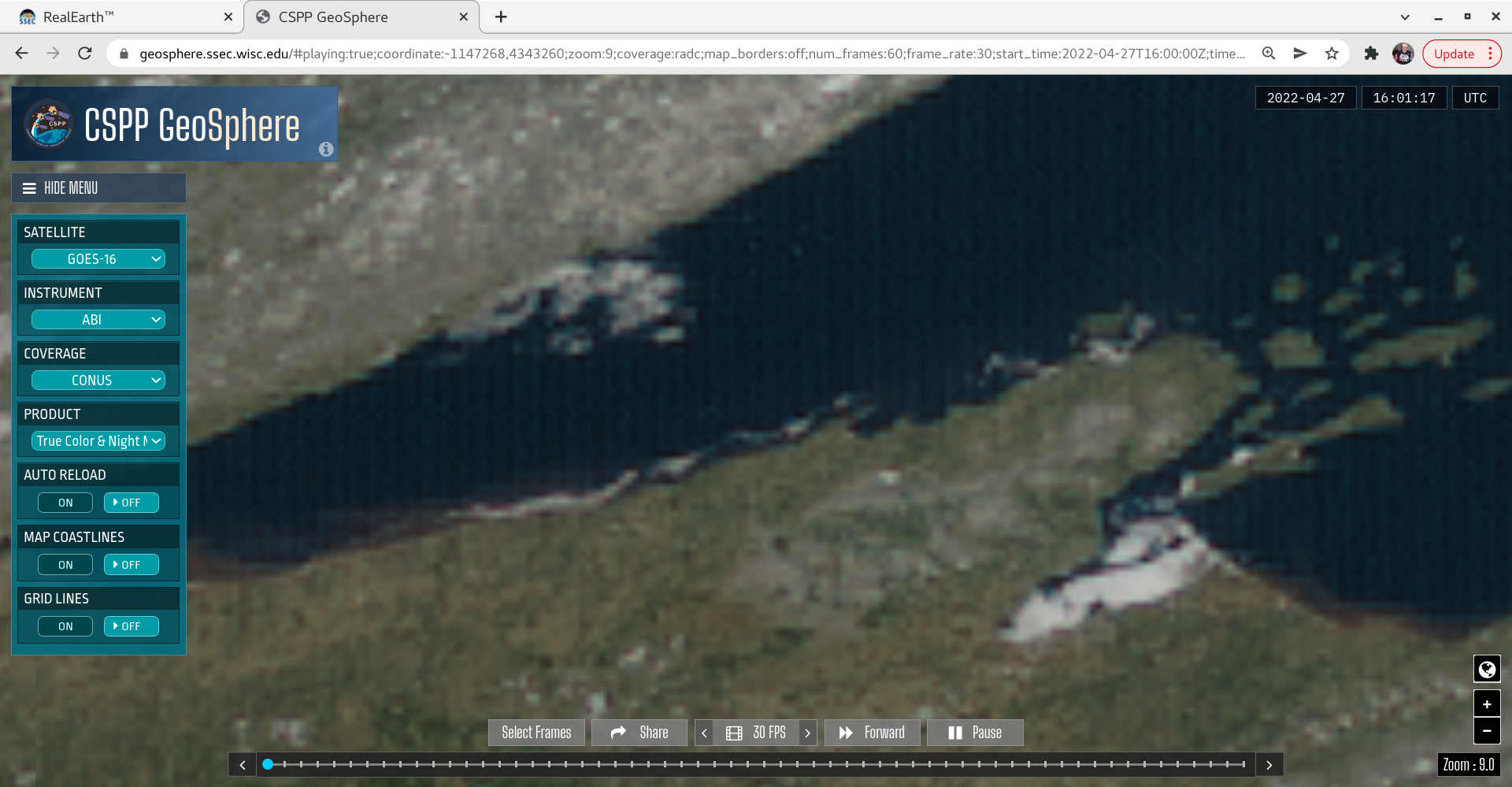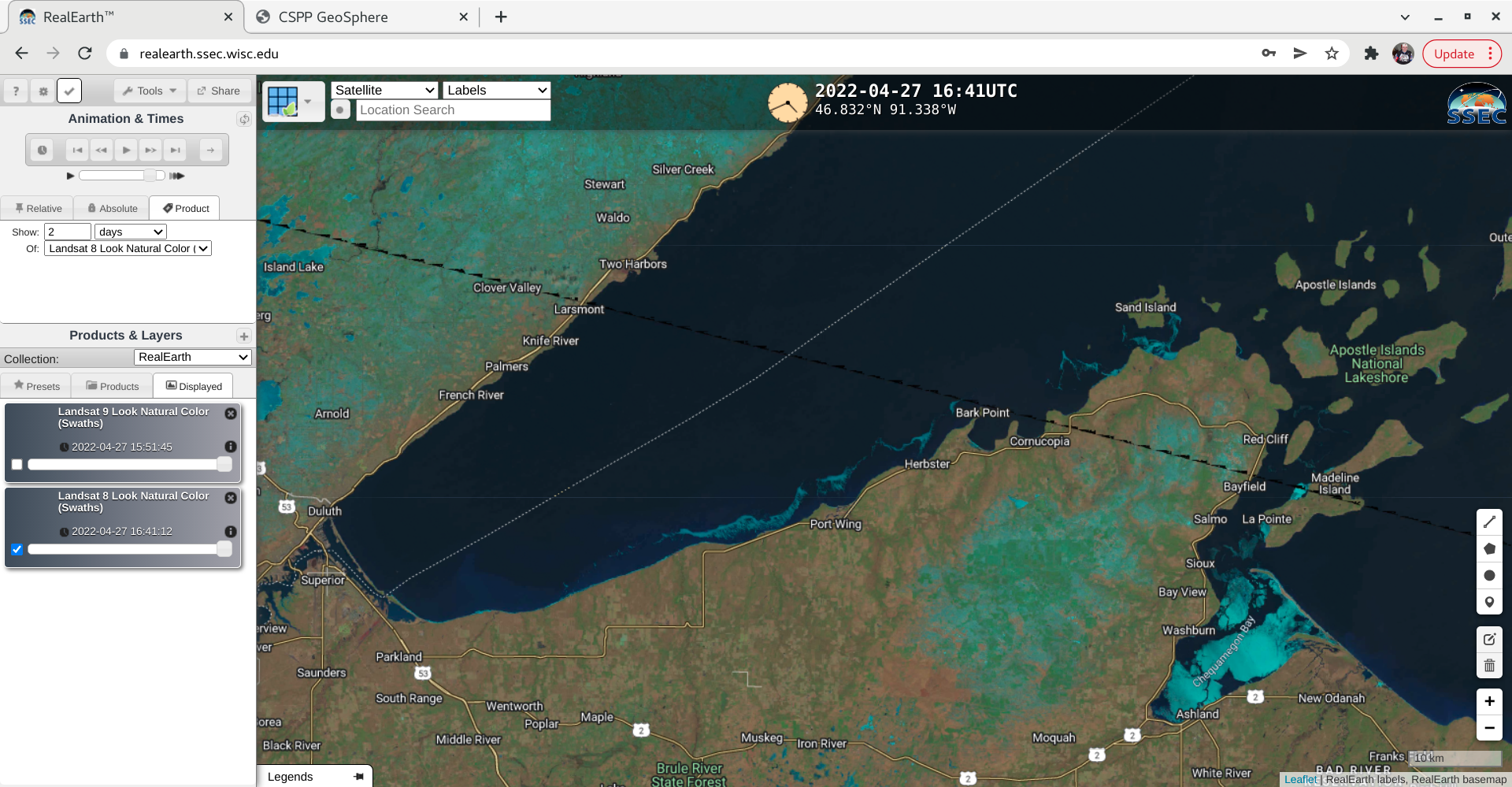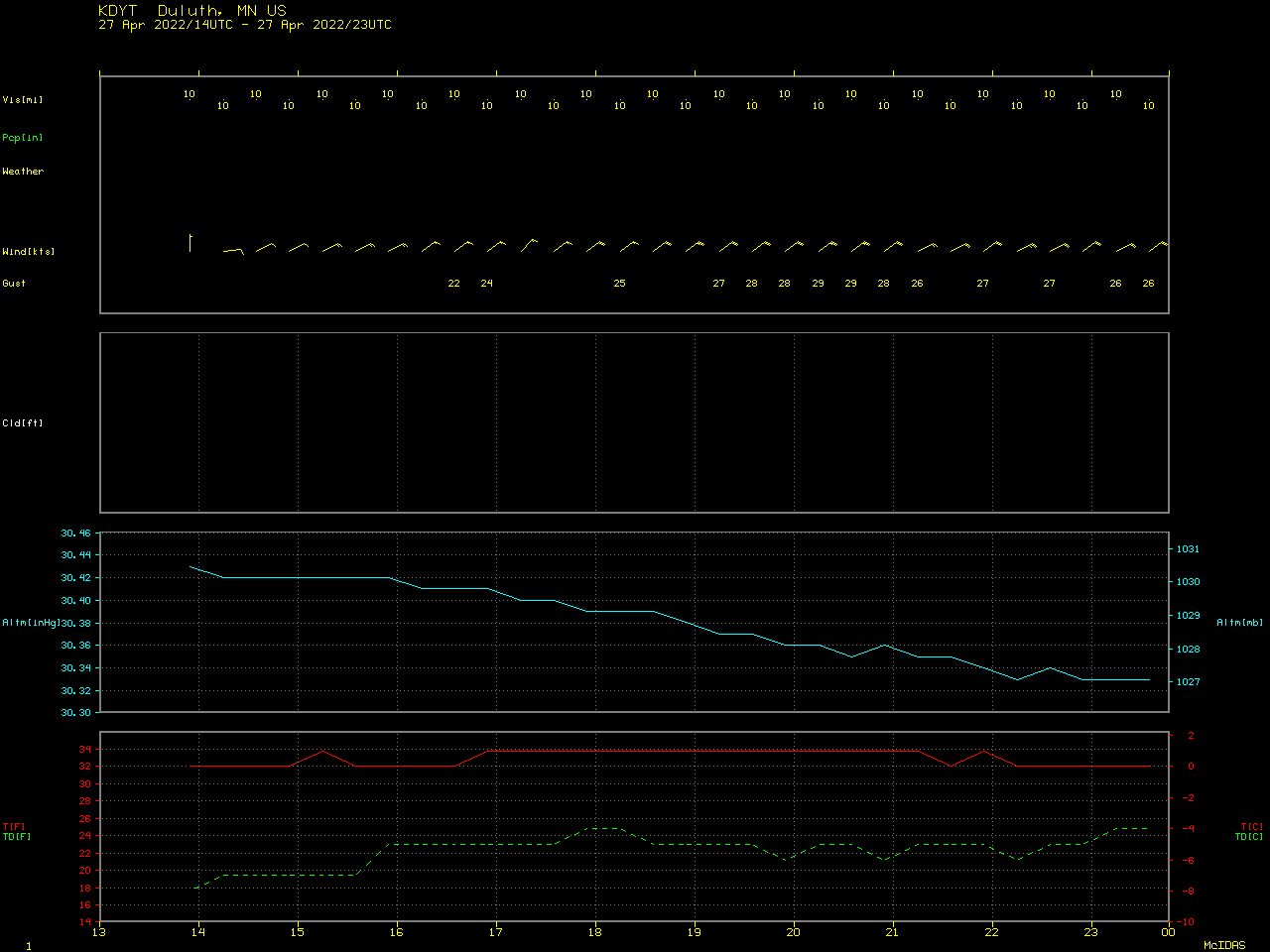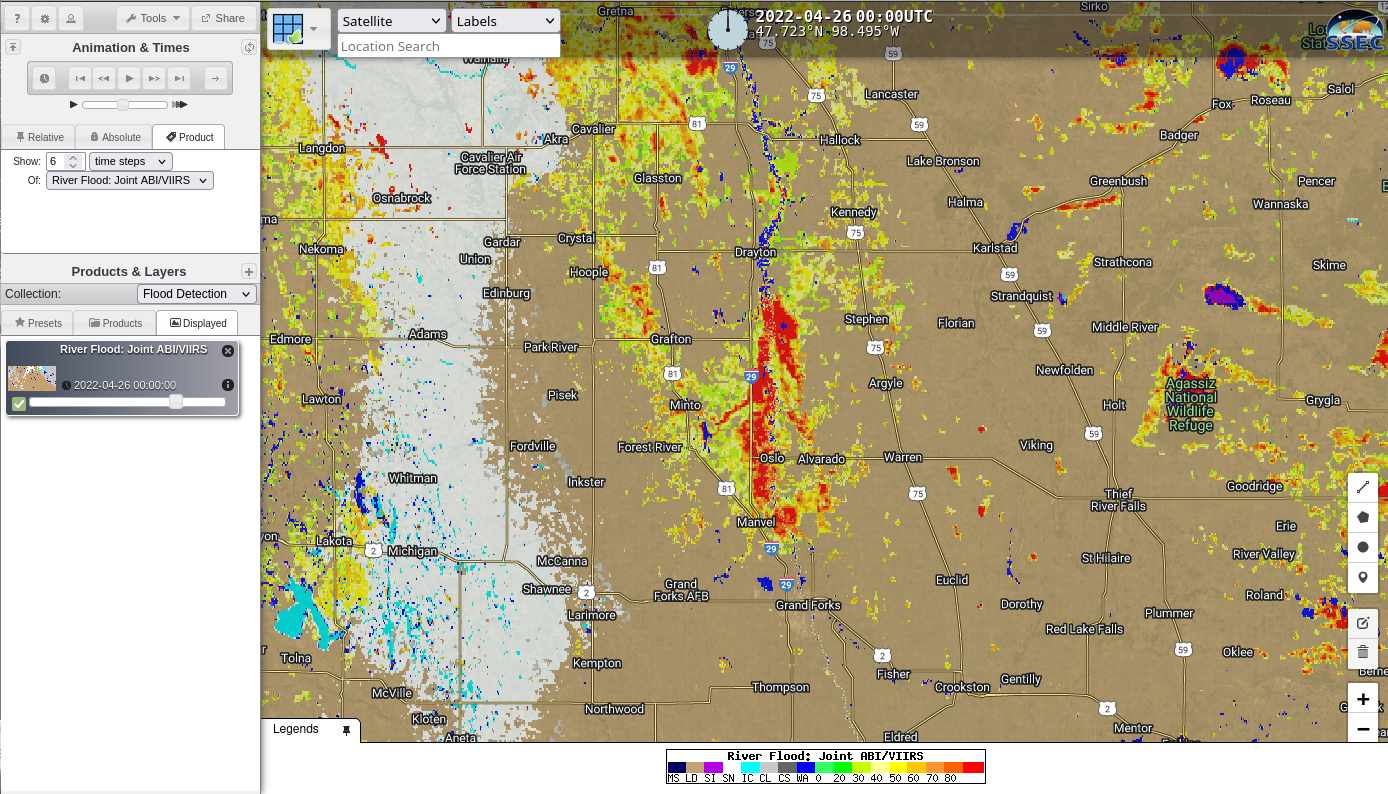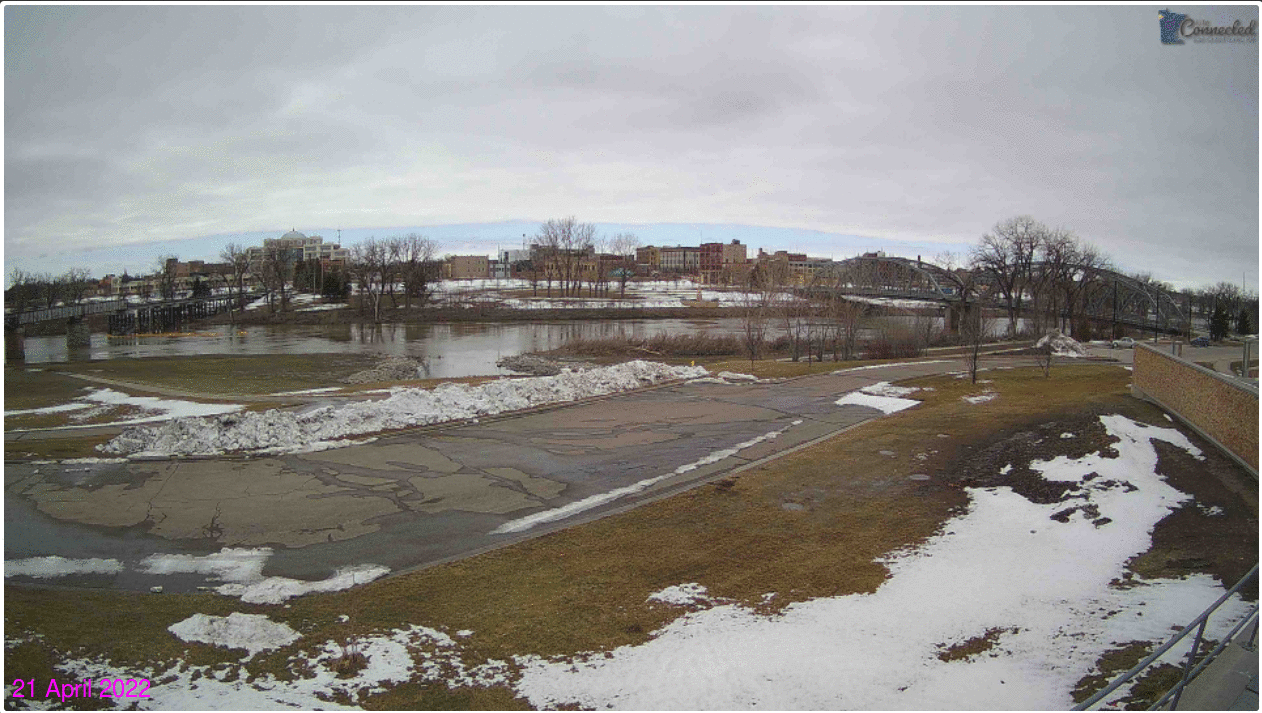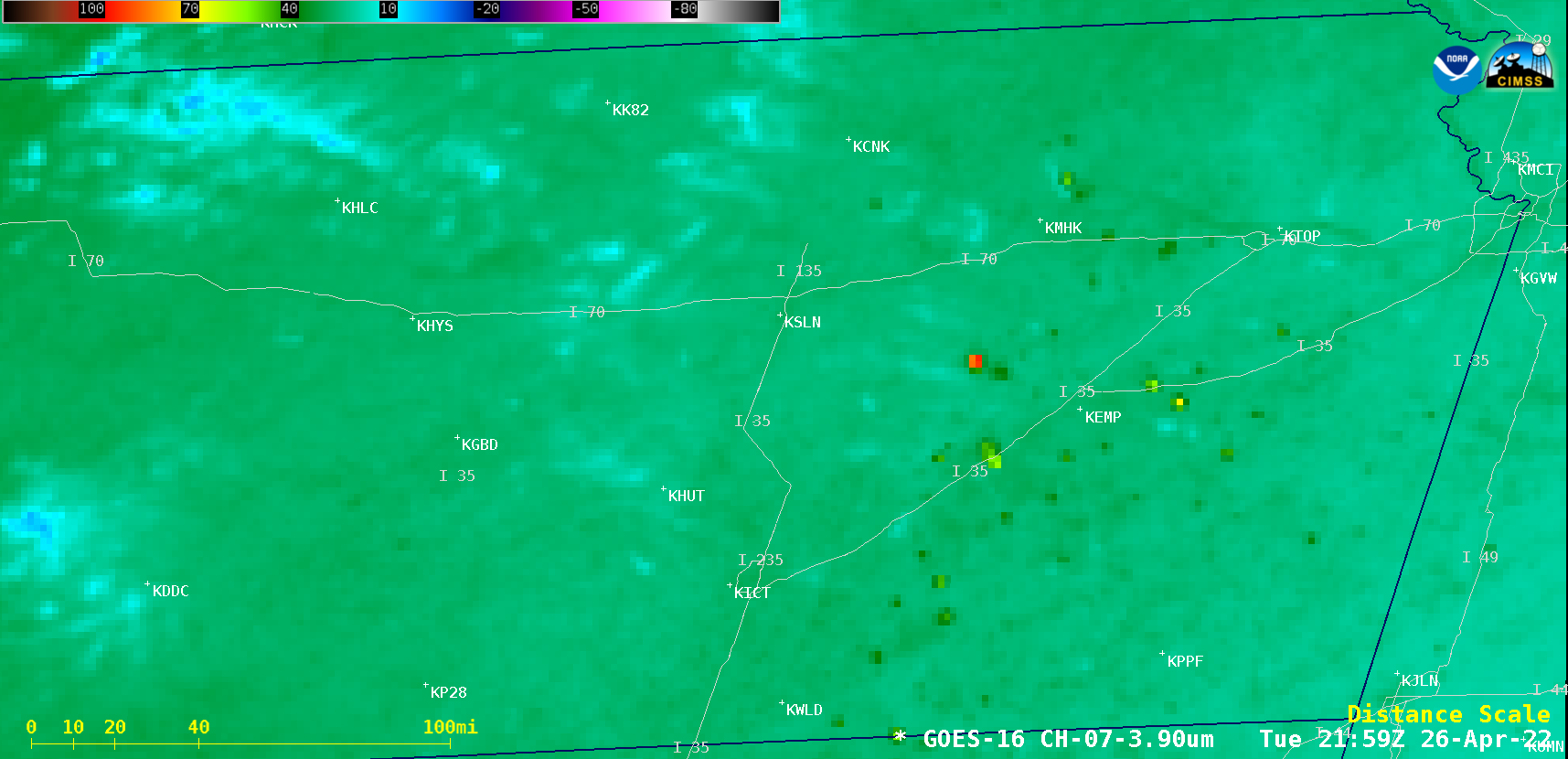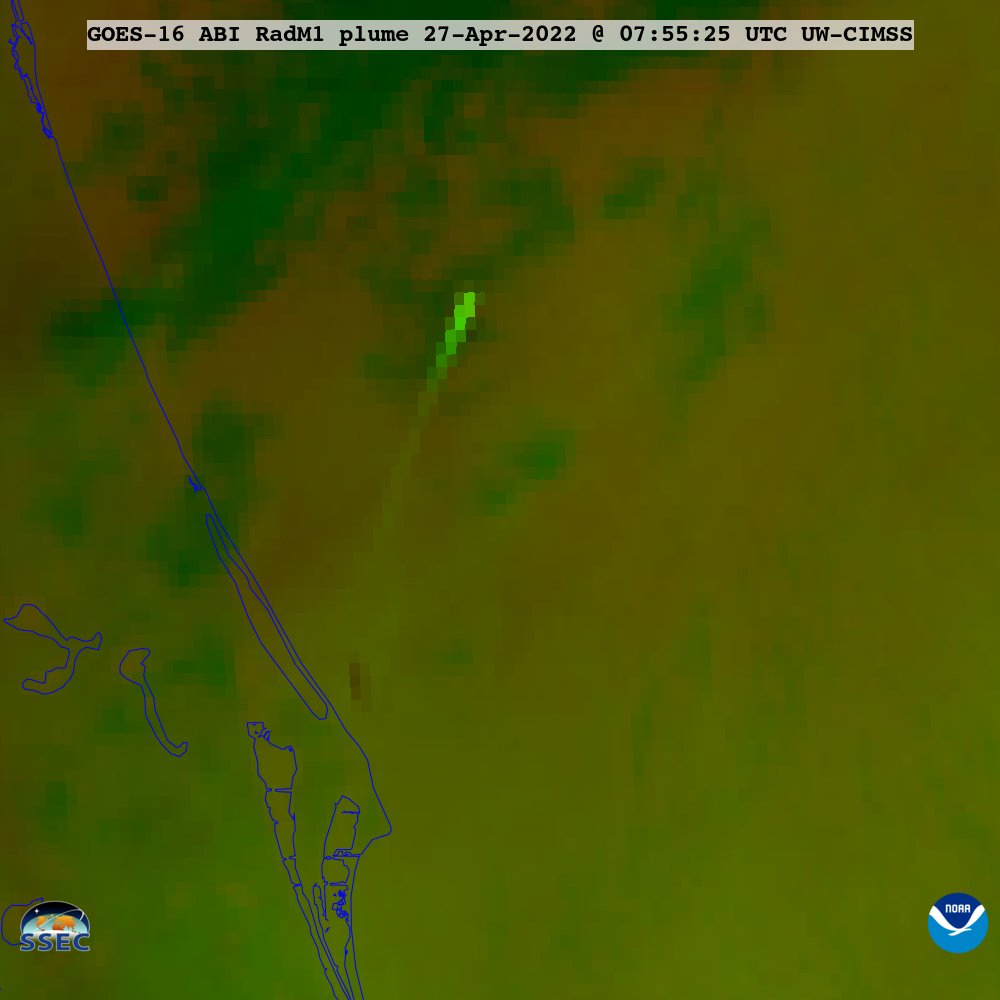
1-minute Mesoscale Domain Sector GOES-16 (GOES-East) images from all 16 ABI spectral bands (above) displayed thermal signatures of the SpaceX Falcon-9 rocket booster as the Crew-4 Mission was launched from Cape Canaveral Space Force Station in Florida on 27 April 2022. The low-altitude rocket condensation cloud was also evident, moving... Read More
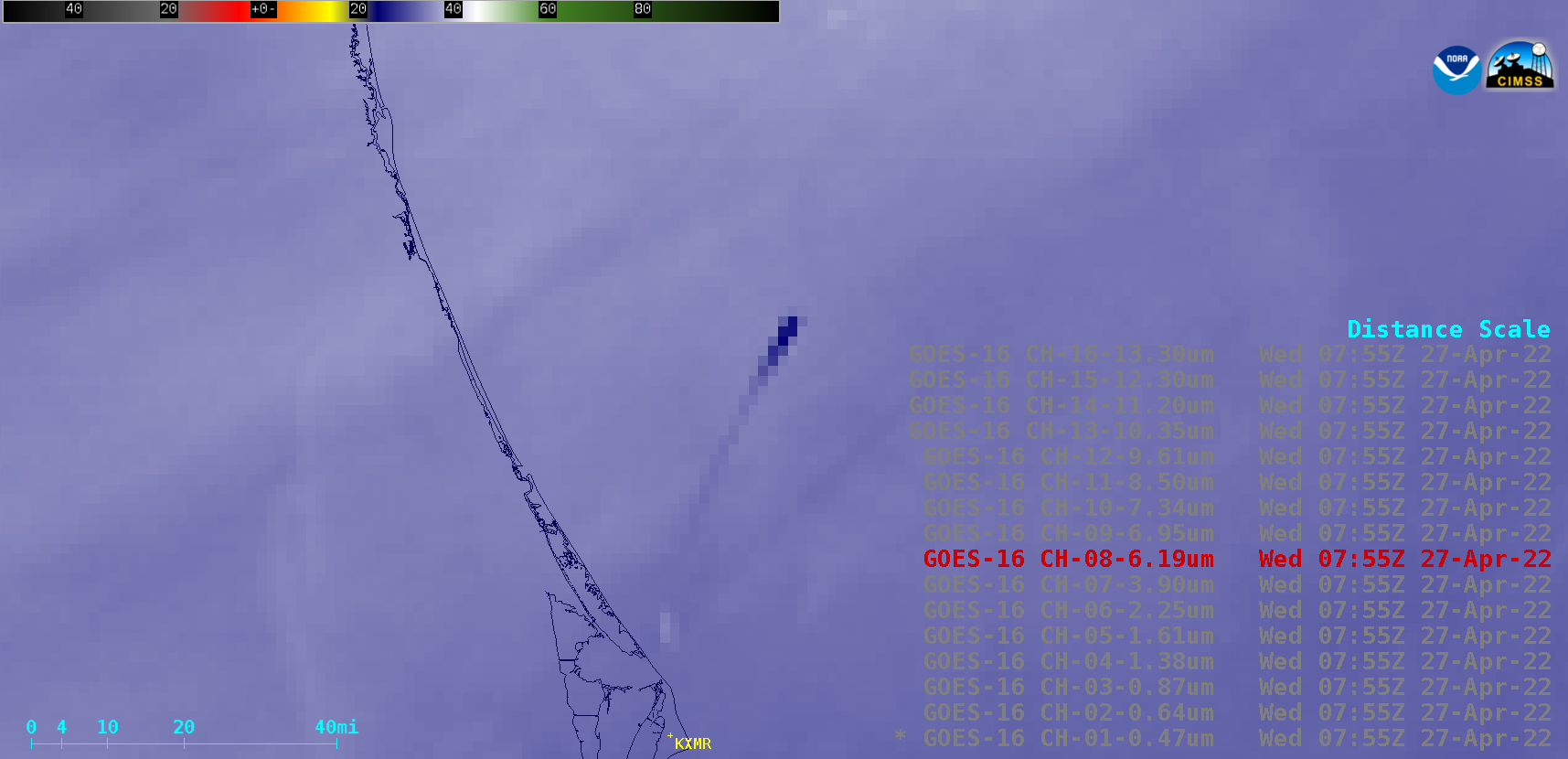
GOES-16 images from all 16 ABI spectral bands [click to play animated GIF | MP4]
1-minute Mesoscale Domain Sector GOES-16
(GOES-East) images from all 16 ABI spectral bands
(above) displayed thermal signatures of the SpaceX Falcon-9 rocket booster as the Crew-4 Mission was launched from Cape Canaveral Space Force Station in Florida on 27 April 2022. The low-altitude rocket condensation cloud was also evident, moving slowly eastward away from the launch site.
GOES-16 Plume RGB images created using Geo2Grid (below) provided an integrated view that highlighted both the northeast-moving hot thermal signature of the rocket booster, and the low-altitude rocket condensation cloud that drifted eastward.

GOES-16 Plume RGB images (credit: Tim Schmit, NOAA/NESDIS/ASPB) [click to play animated GIF | MP4]
A toggle between Upper-level Water Vapor (
6.2 µm) images from GOES-16
(GOES-East) and GOES-17
(GOES-West) at 0755 UTC
(below) showed a large eastward displacement of the booster rocket’s thermal signature in the GOES-17 image — due to
parallax associated with the very large viewing angle from GOES-17.
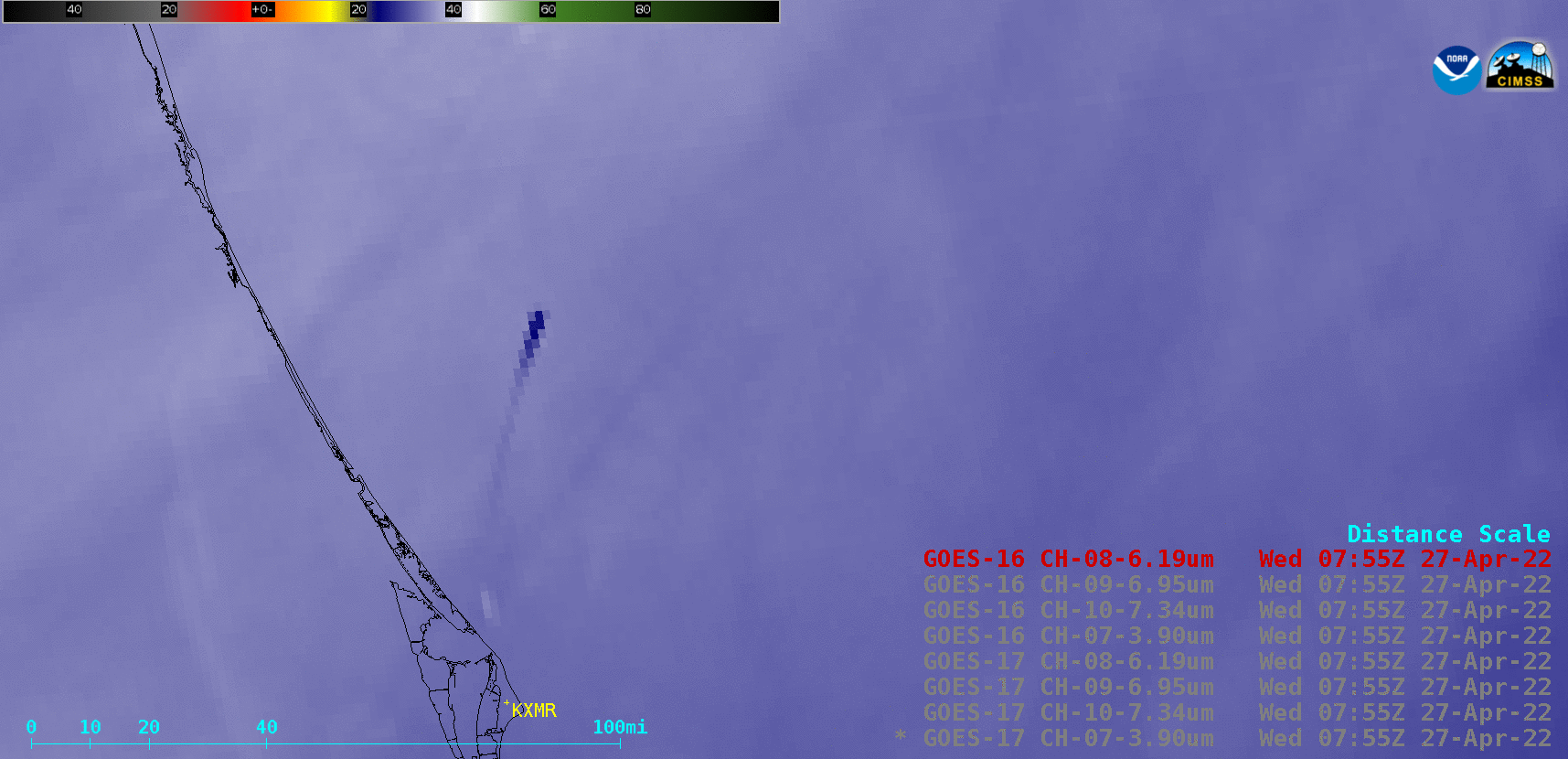
Upper-level Water Vapor (6.2 µm) images from GOES-16 and GOES-17 at 0755 UTC [click to enlarge]

16-panel display of all GOES-16 ABI spectral bands at 0753 UTC, with AWIPS cursor sampling values [click to enlarge]
A 16-panel display of all GOES-16 ABI spectral bands at 0753 UTC which includes AWIPS cursor sampling values
(above) indicated that a slight reflectance value (1.75%) was detected for Band 2 (“Red” Visible, 0.64 µm) — but not for Band 1 (“Blue” Visible, 0.47 µm). However, with GOES-17 viewing the rear portion of the northeastward-ascending Falcon 9 rocket booster, a slight reflectance signal (0.13%) was also seen with the 0.47 µm spectral band
(below).

16-panel display of all GOES-17 ABI spectral bands at 0753 UTC, with AWIPS cursor sampling values [click to enlarge]
View only this post
Read Less
